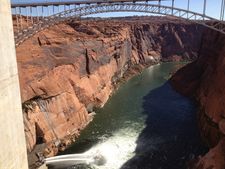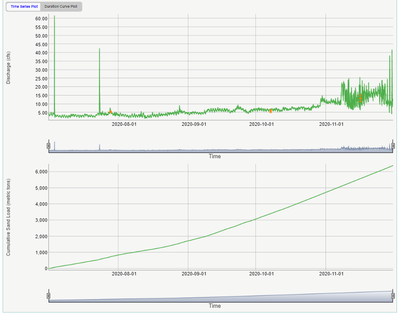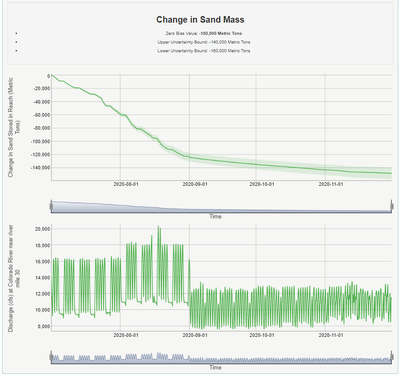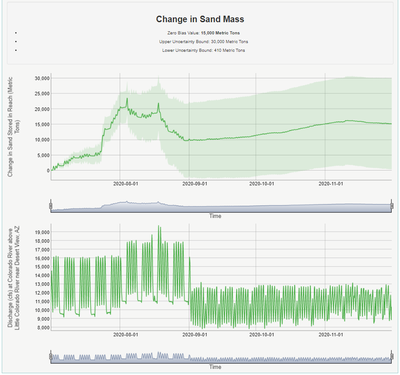The 2020 Fall HFE
| High Flow Experiment- 2020 | |
 |
Contents
[hide]2020 High Flow Experiment Snapshot
There will be no fall High-Flow Experiment at Glen Canyon Dam in 2020. The best available data and modeling indicated that sediment triggering conditions necessary to conduct a 2020 fall HFE at Glen Canyon Dam were not met. HFEs are restricted to limited periods of the year when the highest volumes of sediment may be available to build sandbars in the Grand Canyon. A lack of storms over the Paria River basin resulted in limited sediment input to the Colorado River below Glen Canyon Dam this year. Under the protocol outlined in the Long-Term Experimental and Management Plan Record of Decision, when sufficient sediment has accumulated, fall HFEs can be implemented in October or November. On October 16, 2020, the Glen Canyon Dam Technical Team convened to review current conditions and concluded that sediment conditions were insufficient to consider implementing a fall HFE in 2020. The next window for a potential HFE will be March/April 2021.
No HFEs were conducted in calendar year 2019 or calendar year 2020. On November 5-8, 2018, the Department of the Interior conducted the most recent HFE release from Glen Canyon Dam. The HFE release included a peak flow of approximately 38,100 cubic feet per second for 60 hours (four days including ramping from baseflows to peak release) to move accumulated sediment downstream to help rebuild beaches and sandbars. This HFE release was the first to be conducted under the 2016 LTEMP HFE Protocol. Similar HFE releases were conducted in 2012, 2013, 2014 and 2016 in accordance with the 2011 HFE Environmental Assessment Protocol. The 2018 HFE release provided resource benefits and scientific information to be used in future decision making.
HFE releases are triggered based on sediment accumulation in the Colorado River. They are generally driven by storm activity resulting in floods in the Paria River that move sediment into the Colorado River. Per the 2016 LTEMP ROD, HFE releases could occur within two timeframes: in the spring from March through June and in the fall from October through November. Due to regional weather patterns and other factors, fall HFE releases are expected to occur more frequently than those in the spring. An accounting period for Paria River sediment inputs was determined in the LTEMP ; if enough sediment enters the Colorado River from July-November, a fall HFE release may be planned and conducted. Due to logistical and operational constraints, the decision to conduct a fall HFE release is usually made in October rather than at the end of the accounting period. [1]
Sediment Conditions
Fall Accounting Period
- Paria input (Jul 1 - Nov 30): 6,385 mt
- Accumulated in Upper Marble Canyon (Jul 1 - Nov 30, lower bound) = -160,000 mt
- Accumulated in Lower Marble Canyon (Jul 1 - Nov 30, lower bound) = +410 mt
- Available for HFE: -156,000 my
SUPPORTING DOCUMENTS
COMPLIANCE
CONCERNS
ADDITIONAL


